For the acquisition of any materials for the construction of furnaces, please call 89295111323
Any furnace consists of two most important components - bricks and a binding brick solution, from the quality of which depends the durability of the furnace. It is possible to accumulate clays from the nearest pit to masonry the furnace - it is extremely not true and that's why: clay in the upper beds of the soil contains a large number of organic quantities (plant roots, humus, earth), which, under the influence of high temperatures, burn and the laying quickly collapsed.
Clay for masonry kiln should be taken in the places of its deep lounge, where there are no organications - it is a career, landslide places in ravines, river banks and similar places. Clay are of the most different color from absolutely white to completely black and if the clay color practically does not affect the quality of the future solution, the fat content is very important. The poor, that is, non-fat clays are white and light permanent, and the fattest one is black (Jurassic).
Chimney masonry mix
The mixture for masonry furnaces is better to take ready, so that in the event of an improper ratio of clay and sand, it was not necessary to disassemble the entire oven. Currently, several types of ready-made stoves are presented on sale, but they are not all the same in their qualities. To quickly fold the oven, several types of masonry solutions are required, consider some of them:
Masonry solutions
- A furnace masonry mixture based on red clay, producer - Borovichi "SPO" 25 kg. Properties on the triethrower, since the mixture is poor and has to add chamotte clay to increase the fatty solution. Sand in many bags is large, which causes difficulties when laying and extinguishing seams. The only dignity of this mixture is that it is publicly available and inexpensive - about 200 rubles.
- The oven masonry mixture based on red clay, the manufacturer - Borovich "CEV" 25kg. Properties on the triethrower with a minus, it seems that the manufacturer is a pity clay - one sand!
- Chimney " Hob house Makarov "Kostroma 25kg. Four ++ properties. This is a well-balanced solution with a normal sand fraction, when laying good plasticity, the seams are extended well.
- Finished wet chimney Based on red clay Yaroslavskaya 40 kg. Excellent mixture for five. Very plastic, the sand is small, the seams are exceeded perfectly. True cost about 900 p. But such a price is justified!
- Finished wet chimney based on white clay Yaroslavskaya 40 kg. Excellent mixture for five. Very plastic, the sand is small, the seams are exceeded perfectly. Cost of about 900 p. It looks very nice with dark bricks!
Fireproof solutions
Fireproof solutions are used when the lining of the furnaces with chamoten bricks.
- The furnace refractory mixture based on chamotte clay and sand, the manufacturer - Borovichi "SPO" 25 kg. Properties on the four, the mixture is good for lining of furnace furnaces, but it does not fit for the fireplace, as it has a dark and dirt brick.
- The oven refractory mixture based on chamotte clay, sand and chamotte powder, the Hermes' dealer is 20 kg. The properties on the troechka, the solution is not very convenient in operation, it is suitable only for furnaces.
- Meter MSh-28, used in industrial furnaces for masonry fireproof bricks, as well as suitable in furnace and fireplace furnaces. The properties on the top, with the condition for adding a small amount of light chamotte clay. The fraction is small, which allows you to make a very thin seam, when drying is dried.
- White (light gray) chammed clay + chamotone fine ground powder. Properties are excellent, it is suitable for both furnaces for fireplaces.
KaminSnab Chimney (KaminsNab) offers big choice Mixtures for laying and repairing furnaces. Our range consists only of high-quality manufacturers, such as Terta (Russia), Kvik Mix (Russia). High-quality dry mixes will allow you to build a strong, beautiful fireplace or oven both in the house and in the country.
In the process of masonry, the furnace uses mixtures with clay composition + sand. This solution can be prepared independently, but for confidence in the correctness of the proportions, it is better to purchase a professional mixture for masonry. Also, the manufacturers of furnace mixtures are added for more solid clutch additional difficult materials. In addition to improved technological properties, factory mixtures are careful in laboratories.
The furnace mixture for masonry uses a red heat-resistant clay. It perfectly withstands high temperatures and the open effect of fire. For additional improvements in the mixture, river sand, chamotte clay and other materials can be added to it, and other materials depending on the purpose.
How to choose a stove mixture
The first criterion when choosing a furnace mixture is a heat resistance, i.e. The maximum tolerable temperature. For wood stove And the brick tube is suitable conventional mixtures of clay and sand without additional additives. For complex mechanisms, it is necessary to choose mixtures with heat-resistant additives. They maintain temperatures up to 1700 due to adding, for example, chamotte clay, cement aluminate.
Here you can get acquainted with the flow rate of dry mixes depending on the brick format -
To date, many of us have country private houses or cottages. For their heating, brick furnaces are used, as a rule. Most people prefer to produce heating structures with their own hands, as it is the cost of money, time and labor for this is needed minimal. To build a brick furnace, a masonry mixture is necessary. It depends on the quality and efficiency of using a brick stove. The masonry mixture "holds" the whole design, so it is necessary to come to her purchase or cooking careful and attentive. In this article we will tell about the types of chimples, their advantages and disadvantages, material requirements. We describe how to cook and tell you how to choose the right composition if you decide it purchase in a specialized store.
Requirements for masonry
In order for the brick oven for a long time to serve you without breakdowns and destruction, masonry mixtures stoves must be:
- Secondly, the composition should be elastic. This property also ensures the absence;
- Firstly, heat-resistant. If the main material does not respond to this requirement, your unit will start to collapse literally after several times its operation. This will happen due to the fact that the chimney itself will begin to crack and crumble. The maximum temperature that mixtures can withstand should be at least 400 degrees;
- Third, the compositions must be refractory. When using the heating structure, the inner part of the walls will be repeatedly exposed to open fire, which means that masonry must be inhabited to it.
Here are the three basic requirements that you must comply with for brick furnaces ( ready mixes In stores you need to check for these properties, you can read the composition on the package or ask the consultant).
Types of masonry
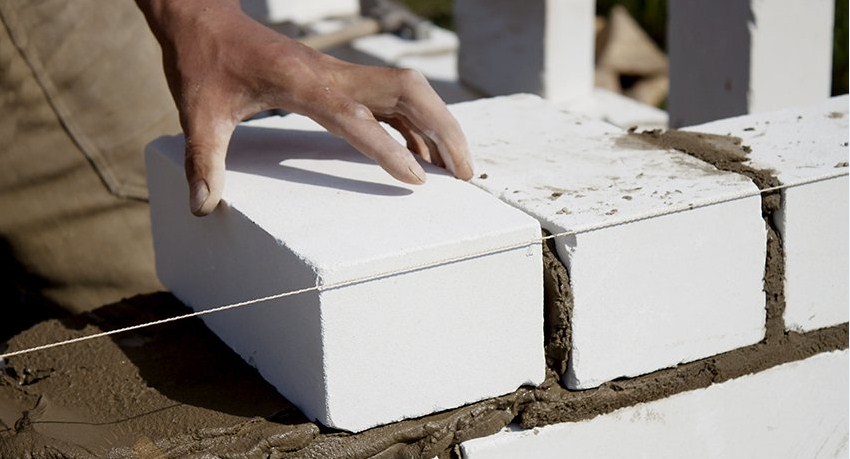 All formulations for masonry furnaces of bricks can be divided into several basic groups according to certain signs.
All formulations for masonry furnaces of bricks can be divided into several basic groups according to certain signs.
Mixes for furnaces and fireplaces are classified by:
- The type of binding substances (according to the form of the substances on which they are based):
- Cement;
- Gypsum;
- Lime;
- Mixed (in these compositions contain several basic substances).
- According to predominant qualities:
- Heat resistant solutions. These mixtures, as well as the rest, withstand large temperatures without prejudice to the heating structure. When cooled, they are deformed quite slightly, do not undergo changes in their composition or structure. Chemically harmless for the human body (no poisonous substances are distinguished);
- Heat resistant solutions. At high temperatures does not change its physical and chemical properties. Thermal deformations in this type of mixtures for furnaces and fireplaces are much less than the first. The composition is able to withstand not only static loads, but also dynamic;
- Fireproof solutions. This composition is capable of a longer contact with an open flame, rather than the first two types. It may be like heat-resistant and heat-resistant.
- According to them aggregate state. Finished compounds for masonry stoves
- Can be sold in the form of ready-made dry mixtures;
- You can make yourself, and they will have a liquid appearance.
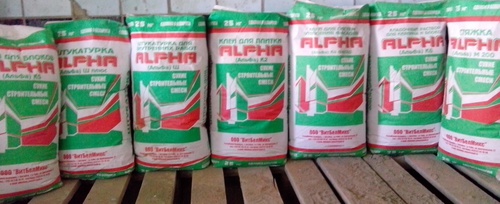 This group includes all the dry mixes in the finished form, as well as the compositions that are used to cover the already built brick furnaces by any material (as a rule, it is a stone, talco chloride, terrimonitis, ceramic tile or tile). Dry mixes are used for masonry exclusively brick aggregates.
This group includes all the dry mixes in the finished form, as well as the compositions that are used to cover the already built brick furnaces by any material (as a rule, it is a stone, talco chloride, terrimonitis, ceramic tile or tile). Dry mixes are used for masonry exclusively brick aggregates.
Main positive trait The compositions in the finished form is that they are very easy to use. You will only need to add a certain amount of water into powder, and you can begin to masonry or facing the furnace. Specialists advise adhere to certain rules In order for the composition to be divorced maximum quality:
- It is necessary to knead such a number of powder, which you can apply in one hour (clay solutions have a property quickly);
- Dilute and stir the mixture is needed by a mixer. When you knead the mixture with your own hands, too much water is added, which affects the quality of the resulting composition;
- Cannot stir mixture of secondary. It is used only once;
- Minimum indoor temperature there must be 10 degrees. Liquid masonry compositions are very sensitive to temperatures.
Liquid chimney mixes
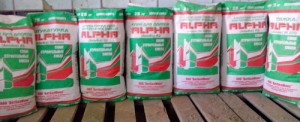 If you decide to cook construction material do it yourself, and you do not have experience in such matters, it is recommended to use clay as the main material. There is something a few reasons:
If you decide to cook construction material do it yourself, and you do not have experience in such matters, it is recommended to use clay as the main material. There is something a few reasons:
- A wide range of different species construction clay on the market and in stores will allow you to make exactly the masonry solution that you need;
- Clay is capable of withstanding high temperatures and allows an open flame contact;
- Features of clay properties determine the elasticity of the composition.
Choose clay before cooking a mixture, it is necessary very carefully. The material must be medium in fat. Fat clay is not suitable for masonry furnaces, since the probability of the subsequent appearance of cracks on it is high. Need to buy the number of clay, Following the specified sand proportions in the composition. It is necessary to knead the solution, you must also follow the proportions (as a rule, they are as follows: Clay refers to the sand as 1: 1).
You can also cook with your own hands limestone building mixture for masonry furnace from brick or cement mixture. However, it is necessary to take into account that in order to prepare these solutions it will take more time, Labor and money than for masonry bricks.
For laying and plastering furnaces and fireplaces, conventional mixtures cannot be used, since the exposure to high temperatures will lead to cracks, unreliability and not durability of the design.
For selection and preparation heat-resistant mix We offer to start to figure out, What kind of varieties exist.
Types of mixes for furnaces
And plaster can be industrial production, which is purchased in specialized stores, and made with their own hands.
Industrial mixes
Such a mixture for a furnace and a fireplace is high temperature compositionwhich connects with water to the formation of a homogeneous mass. The volume of water is usually indicated in the instructions. In addition to conventional ingredients - cement and sand - components are added to the composition, raising heat resistance.
The advantages of using industrial mixtures for masonry and plasters oven and fireplace are:
- Tested by experimentally and time composition. Manufacturers experimentally detect the most persistent proportions and make up the best recipes.
- Inaccessible components. Specific substances added to the mixture are sometimes difficult to find in stores, and their acquisition in small quantities is too expensive.
- Multifunctionality. In many cases, the compositions can also be used for laying furnaces and for cladding.
- Attractive view. Not practical criterion but also important.
Hecknami recommended high-quality refractory mixtures of the following domestic producers: "Plovetonite", "Terracotta", "Makarov's Chimney", "Pechsk", "Skaneks", "SPO".
The main disadvantage of industrial compositions is their cost. For this reason, make a solution with your own hands is rational and more economical.
Mixtures of independent preparation
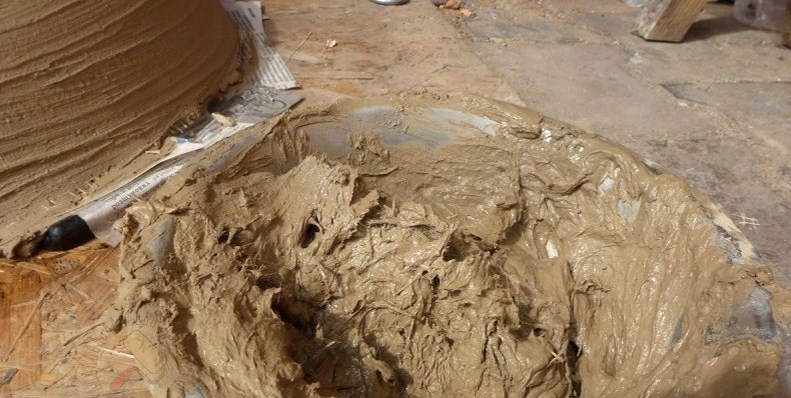 Depending on the operating conditions of the furnace or fireplace, as well as on the appointment, mixtures are there:
Depending on the operating conditions of the furnace or fireplace, as well as on the appointment, mixtures are there:
- clay
- cement
- and lime.
The composition of homemade fireproof mixes For masonry furnace is mandatory clay and sand. To increase plasticity, lime milk is added, the asbestos is used as a reinforcing substance. Depending on the needs of the owner, the furnace is added and other components.
The minuses of such solutions are:
- Insufficient strength. As it is known, clay is distinguished by a low level of resistance to mechanical effects; For this reason, the solution on its basis is suitable only for masonry, but not for finishing works, in particular, plaster. In addition, the composition of the clay itself is also different that in the end it may affect the result.
- Unattractive appearance . For furnaces and fireplaces located in residential premises, where the aesthetic aspect of the result is important, it is better to use a purchased mixture for the execution of plaster. For utility rooms, where the appearance of the furnace does not play a key role, you can use clay-based solution.
Some aspects of using ready-made mixtures
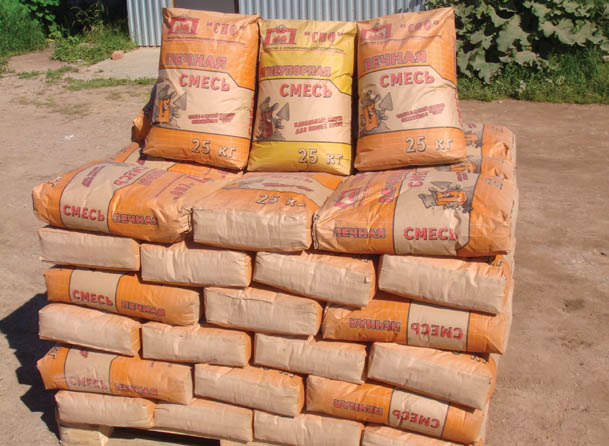 After purchasing a mixture for an oven, it is necessary to carefully familiarize yourself with the instructions and recommendations of the manufacturer. The main generally accepted rules are the following: the masonry process and should occur at ambient temperature. not lower than + 5 degreesAnd the composition should be stored in a warm dry place. Before the acquisition, it is necessary to inspect the package: it should not be damaged, otherwise there is a violation of the chemical characteristics of the composition.
After purchasing a mixture for an oven, it is necessary to carefully familiarize yourself with the instructions and recommendations of the manufacturer. The main generally accepted rules are the following: the masonry process and should occur at ambient temperature. not lower than + 5 degreesAnd the composition should be stored in a warm dry place. Before the acquisition, it is necessary to inspect the package: it should not be damaged, otherwise there is a violation of the chemical characteristics of the composition.
For the preparation of the solution with the most frequent proportion of the amount of water and the mixture is 1 kg of composition at 0.27 l conventional tap water. Before direct masonry to ensure greater strength bricks, it is necessary to moisten with water.
Preparation of a solution with their own forces
 For the cooking for the furnace, with their own hands, the raw clay is used as the main component, which has the necessary properties in order for the design seams to be shrinkled. So that the clay does not crumble cement is added in proportion 2 parts of clay, 0.3 parts of cement and one part of the sand.
For the cooking for the furnace, with their own hands, the raw clay is used as the main component, which has the necessary properties in order for the design seams to be shrinkled. So that the clay does not crumble cement is added in proportion 2 parts of clay, 0.3 parts of cement and one part of the sand.
In addition, clay fatty should be checked. For this, it is mixed and intensively kneaded in hand. From the resulting mass is formed a ball with a diameter of ~ 5 cm, which is placed between two surfaces, for example, as well. Boards gradually compress, flattening ball. Perfect mixture cracks when compressed by 1/3. If cracks appear earlier, it speaks of missing fat, otherwise - About her legality. Low-fat clay should not be used to prepare a solution; When using excessively oily clay, change the proportions by adding more sand.
Sand for the solution is desirable to use mountain, which, due to a rough texture, contributes to improved clutch with brick. While sea or river sand has a smooth surface. Before adding to the sand solution, it is necessary to sift through sieve cells 1.5 x 1.5 mm. After that it is desirable to rinse with water.
The resulting mixture can be used only in cases where the heat heating temperature does not exceed 90 degrees Celsius. That is, it is impossible to call this solution completely heat-resistant. To increase fireproof The compound is added to the solution - powder consisting of refractory clay. Solutions prepared for plaster differ in that they are added silicon glue that increases their heat resistance. You can purchase glue in a construction store, where it will be the name of it as "liquid glass". Total share of glue in solution must be 20%.
To solve whether to buy a mixture or cook it with your own hands, It is necessary to answer two questions: Does the experience of self-preparation of the mixture? How important is the moment of savings money for the manufacture of oven masonry?
Planning to build a fireplace or brick oven with your own hands, you need to choose the case correctly. And we are talking not only about the brick, but also about the mixture for masonry furnaces. Right choice Materials affects the properties of the finished product ..
Modern masters use different mixes for masonry furnaces, to perform brick masonry with their own hands, you can choose the composition on different bases. Application formulations:
- Cement;
- Mixed consisting of several binding elements;
- Gypsum mixes;
- Lime.
For masonry and cladding, as a rule, astringent elements of mineral origin are used:
- Clay;
- Lime;
- Gypsum;
- Cement.
Mixes of refractory for furnaces and fireplaces are divided into several types:
- Clayare used to masonry the main structural elements;
- Cement, Used in the manufacture of the foundation with a wet soil. Used in the manufacture of outer pipes. Serve for the preparation of mixtures when installing chimneys Above the roof level.
Lime and cement mixtures for the furnace
Cement mortar

Claine solutions
When installing fireplaces, experts advise to use a mixture for masonry a brick furnace, the basis of which is clay. This masonry mix is ideal for masonry oven And her cladding. The strength of the entire design depends on quality preparation. For masonry and facing, the clay solution should be quite plastic, but not liquid. If the masonry mixture is cooked correct, then it will give small shrinkage and can withstand the temperature up to 1000ºС.
The mixture for plastering clay furnace is divided into skinny and fat. Oily preparation allows the solution to easily lie down on the brick or wall, without cracks and a thin layer. But when drying, gives a large shrinkage under the firing. Therefore, it should not be used in the masonry of fireplaces and stoves. The most suitable refractory masonry mixture is a skinny solution.
Clay mortar for masonry furnaces and fireplaces
Preparation of the solution:
- For the preparation of the Master's solution advised to apply mountain sand shallow fraction.
- Pre-sand follows clear garbage and small stonesBy skipping through a sieve.
- The diameter of the sieve cell must be no more than 1.5 mm. This will make it possible to make a fairly thin seam in the masonry. The amount of sand added should be determined from the quality of clay.
Determine the quality of clay
- In the first way You should take a bucket with clay around 10 L., add water, stir up to a homogeneous mass. If the plastic of the solution is low, the clay should be added. Be a solution to such a state so that when pulling out a plate on it remained a layer with a thickness of 2 mm. Clay is required to add small portions and mix thoroughly.
- In the second method The clay of medium fatty is used. It should be measured by a liter can of five portions (after cleaning through a sieve). Take the first portion to take clean material, without adding sand. To add to the next 1/10 Sand banks, to the third bank already add ¼ Part of the sand bank, fourth - 3/4The fifth bank should be completely filled with sand. In the resulting mixture, we plunge water to such an extent so that it is well kneaded by hand and did not stick to the skin. Now from each dieting portion download the ball with a diameter of about 5 mm. Still replete pellets thick about 3 cm. All this is dry 10-12 days at normal temperature. After that, dropped dried products from a height of about 1 m on a solid surface. Those products that do not scatter and indicate proper combination Elements. It is this clay that is suitable for masonry.
- Third way Checks are identical to the second. Only balls should be put between two dusts And put pressure on the one that from above. Unsuitable clay in balls quickly scatters after pressing. With proportion of compression by 30% There are quite thin cracks. Balls made of oily clay will crack after 50% compression.
For cooking refractory solution Applied chamotte clay. It turns out a chamotte clay from kaolin at a temperature of 1,100 degrees. In the store, the chamotte clay is sold with various additives, these are ready-made mixes for masonry. Choosing the finished mixtures, you need to carefully read the instructions, since the finished mixtures in which the chamotte clay is enabled are different.
Proper preparing solution

After sieving sand and clay and definitions of clay, a masonry mixture can be prepared. There are three ways to prepare. You can choose the one that is most suitable for masonry stoves and fireplaces.
Methods for making a solution
- You should soak the desired amount of clay in the container for 2-3 days. After that, water is added and stirred until all lumps disappear and a homogeneous mass fails. Crash lumps can be carried out and using Tambruski. Next with your hands, treat the entire mixture and remove the remaining lumps (do not forget to mix the clay with sand in the desired proportion). The resulting solution must fall from the metal surface of the trowel or shovels without obstacles. If you put a layer of the solution on the brick and try to lift in five minutes, with proper preparation of the solution, the lower brick will not break away from the masonry. If in a good solution to dip a wooden surface, then when pulling out it will be covered with a slight layer finished products And without a different sticking. The liquid solution will leave a thin film, which will not leave anything at all.
- If the clay of normal viscosity and not required to add sandCompared as follows. Clay is poured onto a wooden surface with layers, while it is wetted with water. Clay must soften. After that, it is shuffled several times. Then they crush it into one pile with up to 350 mm high. The length of the heap will depend on the volume of clay. Next, strike shovel by the resulting Holloch, this is done for the crushing of the lumps of the mixture. During the work, the stones are removed from the total mass. Such a procedure is repeated up to 5 times. The solution should turn out as described in the first method.
- The third method is acceptable for normal clay, without sand adding. Such a dry mixture is falling asleep in the trough layers, and it is wetted with water. After full loading is poured with liquid. Give to blaming few hours. After thoroughly stirred and passed through a sieve with a cell to 3 mm, the water is added, and the solution is brought to the required mass.
When adding sand, the supplements are made. Each material is sieved separately. And only after changing clay, sand is added in the desired proportion, and everything is mixed together.

Of course, the preparation of the clay solution is a time-consuming procedure. But when completing the masonry, it pays off. If you need a little solution, it is possible to replace it already ready. They are on sale there are a large number.




